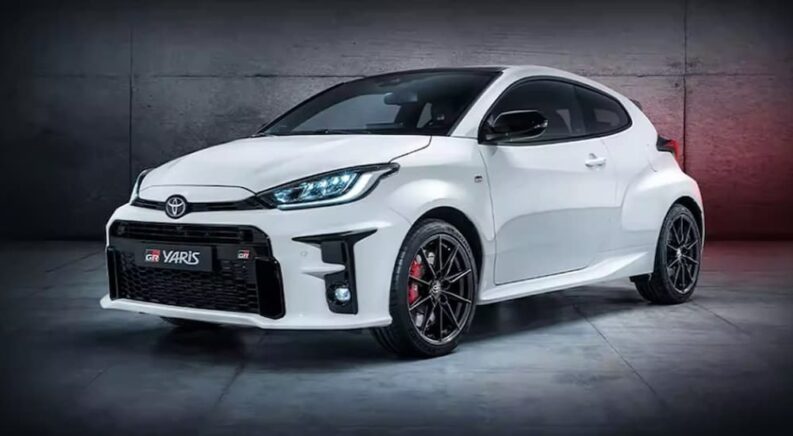The 2023 season of World Rally Championship racing is heating up as Finland’s Kalle Rovanperä secures his second first-place win of the year, adding WRC Rally Estonia to his laurels alongside WRC Vodafone Rally de Portugal, which he won back in May. The 22-year-old driver gained fame back in 2021 when he became the youngest winner of a World Rally Championship and he’s only gotten more experience at rally racing since then.
Rovanperä’s win must be a big blow to the ego of Ott Tänak, the Estonian driver who took home the gold at WRC Rally Sweden in February, but hasn’t managed to get another first place victory since. Tänak’s history with the Estonian rally goes way back, and he’s won the competition four times before. This year, however, he only managed to secure eighth place, which must be a blow to the local rally fans in his home country. One big setback was a five-minute time penalty that Tänak received before the start of the rally. His car had an issue during the shakedown and needed an engine replacement, which was the cause for the penalty thanks to unfortunate timing. Had this not been the case, Estonian fans would have had more to cheer about as they followed their local event.
Finnish fans, on the other hand, have had quite the exciting rally. At the end of the first leg, Rovanperä was ahead of Belgian driver Thierry Neuville by just 3.0 seconds. Neuville had the early lead, sprinting out of the blocks at the start and managing to maintain a 6.8 second lead by the midpoint for the day. But Rovanperä caught up, setting several benchmark times in the process.
Rovanperä’s lead only grew the next day, as he stayed ahead of Neuville for every stage of the penultimate leg, setting nine benchmark times in a row. The top five leading positions after the second leg were the same drivers in the same order as the leaderboard after the first leg. However, instead of a 3.0 second lead, Rovanperä now had a 34.9 second lead over Neuville. At this point, it was already pretty safe to call the event for Finland.
In the end, Rovanperä finished with a 52.7 second lead over Neuville, who came in second. This marks Rovanperä’s third consecutive Rally Estonia win, an auspicious start to the young driver’s career. But Rally Estonia is just one event in the 2023 World Rally Championship, so let’s take a look at where this puts the drivers in the overall competition.
The Championship So Far
This win makes Rovanperä only the second driver this year to win more than one event. French driver Sébastien Ogier won the first event of the year, WRC Rallye Monte-Carlo in January, went on to place first at WRC Guanajuato Rally México in March, and also won WRC Safari Rally Kenya in June. However, Ogier is in fifth position with 98 points in the overall championship standings after the dust has settled from WRC Rally Estonia. Rovanperä may have only two first-place wins for the year, but throughout the entirety of the first eight events, he’s never finished lower than fourth place. In addition to his two wins, he’s finished second twice, third once, and fourth three times, showing amazing consistency in the top ranks.
Looking at the overall championship standings after WRC Rally Estonia, Rovanperä is in first place with a total of 170 points. That gives him a comfortable buffer between himself and UK driver Elfyn Evans, who is in second place with 115 points. Belgian driver Thierry Neuville isn’t far behind Evans, with 112 points putting him in third place overall. While Estonian driver Ott Tänak may not have been able to get the home court advantage in the latest event, he does have a solid standing in fourth place, with 104 points overall.
The Car Rovanperä Is Driving
Rovanperä’s lead as an individual is already impressive enough, but the lead that his team has over the competition is even more noteworthy. Rovanperä, Evans, and Ogier are all driving for Toyota behind the wheel of the Gazoo Racing Yaris Rally1 Hybrid. Since this model is being driven by three of the top five champions in the competition so far, let’s take a closer look at what it’s bringing to the WRC.
Introduced in 2022 following a new set of FIA Rally1 technical regulations, this purpose-built rally car is not only fast and tough, it’s also sustainable thanks to its hybrid electric power. The 1.6L turbo engine carries over from the previous generation, but is paired with a 3.9-kilowatt-hour battery that powers an electric motor, bringing an extra 134 horsepower to the table for more power than before. Between the engine and the motor, the car has a maximum power output of nearly 500 horsepower and 369 lb-ft of torque. Of course, that’s with a fully charged battery, but the battery can be charged both with an external power source during service breaks and via regenerative braking, making sure that energy that would normally be lost to heat is redirected to the battery for an extra boost of power.
The new regulations introduced in 2022 also affect the body of the vehicle. New safety standards are in place, so Toyota gave their new vehicle a space frame design that offers drivers more protection than previous designs. There are also some features that improved aerodynamics on past models that are no longer allowed on WRC cars. But don’t fret, there are still plenty of unique elements on Rally1 cars, like the side skirts and rear wings on the GR Yaris Rally1 Hybrid, which provide added stability for a better ride.
On top of the hybrid power, the Toyota also runs on a mix of synthetic and bio-fuel components, meaning it doesn’t need any fossil fuels in order to run. WRC fans can enjoy all of the thrills of their favorite races without needing to feel guilty about the sport’s environmental impact. As innovations like these continue, we’ll be curious to see how new technologies are embraced by the WRC and how they impact the racing.
The Road Ahead
The next event is WRC Secto Rally Finland, and local fans are sure to be high off the excitement of Rovanperä’s recent win and current first-place standing in the overall leaderboards. After that, there are still another four events for the year, taking place in Greece, Chile, Central Europe, and Japan. No one can say for sure whether Rovanperä will still be looking so hot by the end of the year, but with his current lead and impressive recent performances, it’s easy to see him taking it all the way and coming out on top.
Still, despite the wide gap between first and second, there’s still time for things to take a drastic turn. Ogier’s three event wins are impressive, and being fifth overall for now, a few more impressive runs could shake things up. Evans and Neuville are neck and neck in second and third place. Each has won a previous event, so they’re both in good position to come for Rovanperä’s spot. We’ll just have to keep tuning in to WRC racing to find out how the 2023 season ends up.




